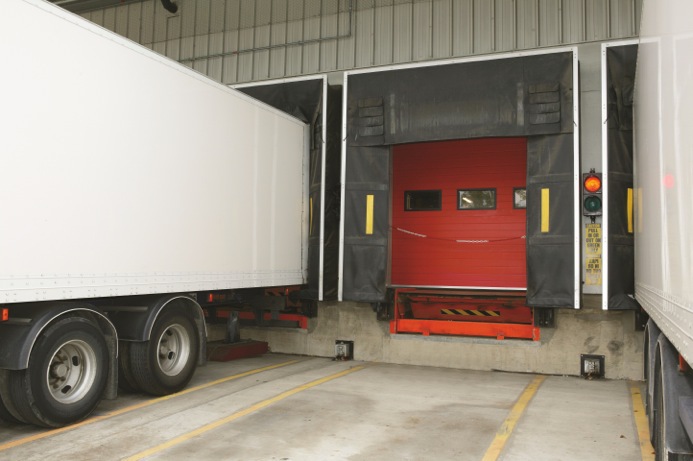

|
Edward Lowton
Editor |


|
| Home> | Premises management/maintenance | >Loading bay equipment | >Loading bays essentials |
| Home> | Handling and Storing | >Loading bays and doors | >Loading bays essentials |
Loading bays essentials
25 February 2015
Thorworld believes that there are a number of loading bay requirements that all companies require – whatever the configuration of their loading bay.

It is highly likely that there will be a height differential between loading bay and vehicle, so a range of equipment needs to be available to achieve safe access from one to the other. While the most popular of these bridging devices is the dock leveller, it is worth looking at the various options.
"Lift Tables, Dockplates, Dockboards and Hinged Bridgeplates” all offer their particular advantages and might suit certain loading bay set-ups better than a dock leveller,” explains John Meale. "For SMEs especially, they can provide a cost-effective alternative that is more than satisfactory for their loading requirements.”
Another area where cost savings and efficiency can be achieved easily is by installing equipment to prevent weather ingress. Dock seals or shelters are proven to provide barriers against the elements; as such, they deliver diverse benefits to warehouse operators.
"Not only do these devices protect staff from adverse weather conditions, they ensure a consistent ambient temperature within the warehouse,” confirms John Meale. "The result is a significant decrease in energy bills, particularly in a cold store environment where temperature is critical and energy is expensive.”
Naturally, investment in hard-wearing, reliable loading bay doors can ensure these benefits are maintained once loading/unloading is complete and the bay is not in use.
Buildings also need to be protected during the loading/unloading process. "Without adequate protective measures, a reversing trailer can do a lot of damage to warehouse premises,” explains John Meale. "For that reason, it is advised to invest in dock bumpers and vehicle alignment curbs.”
Dock bumpers are available in a range of materials and shapes, offering substantial impact protection to cushion building and vehicle alike from the worst of a collision. Meanwhile, alignment curbs provide a highly visible and effective means of channelling the vehicle along the correct path up to the loading bay.
Just as arriving at the loading bay contains its risks, so too does the departure – especially if prematurely. "If a driver leaves while goods are still being loaded or unloaded, there is a significant risk of staff, goods or fork lifts falling off the back of the trailer, with potentially fatal results,” explains John Meale.
A range of preventative measures can be installed to avoid this possibility, from simple mechanisms such as wheel chocks to more sophisticated vehicle restraints and interlocking systems, which can only be unlocked when the all-clear has been granted.
Ultimately, communication is key; misunderstandings between drivers and warehouse staff can be disastrous if they cause bottlenecks or accidents. "Creating a safe, efficient flow of traffic around the loading bay can be achieved very simply, often by using highly visual methods of advising others when it is safe to drive or reverse,” explains John Meale. "Dock lights or traffic lights are ideal, not least because they are simple to install and easy to understand.”
- Modular loading system
- Extra wide mobile yard ramp
- Safety aids and accessories for loading bays
- Wide-access loading platforms
- Thorworld fashions a bespoke solution
- Thorworld Industries ramps up capabilities for Chloros
- Repeat rent-a-ramp installation
- Heavy weight role
- Achieving loading operation efficiency savings
- Christmas despatched on time

















